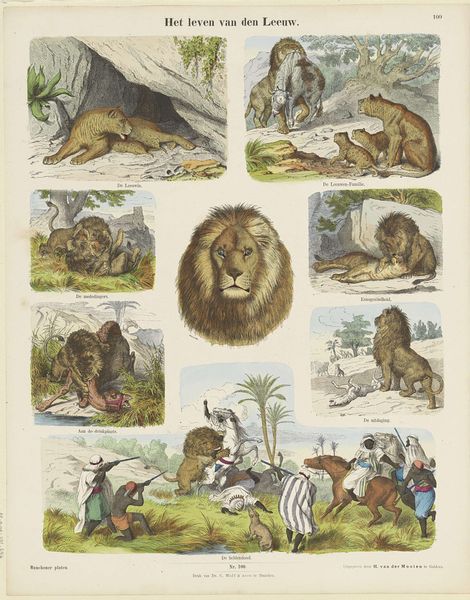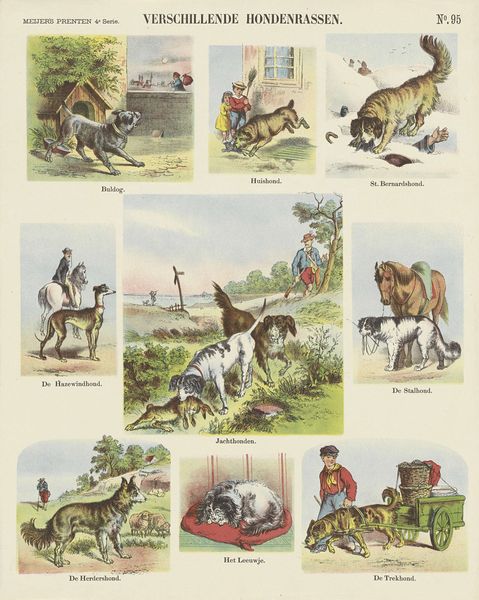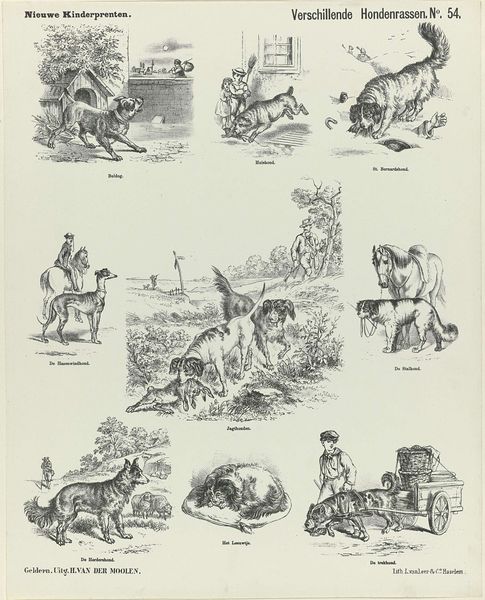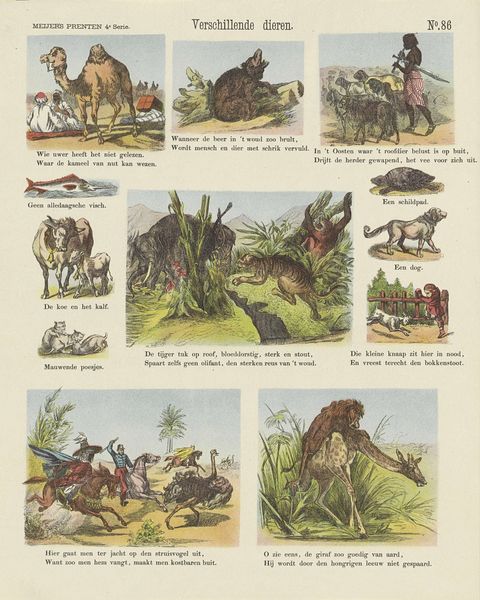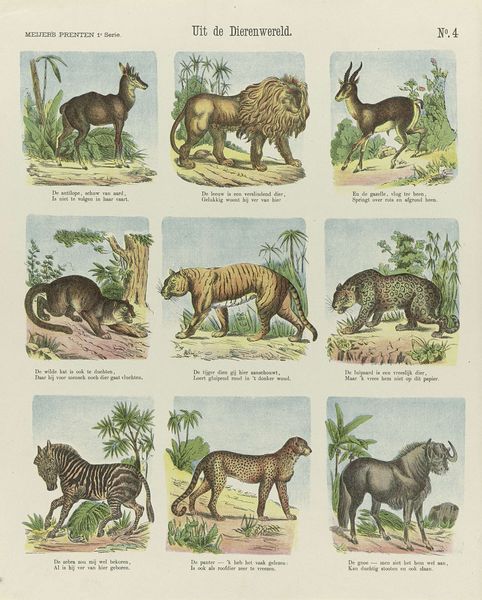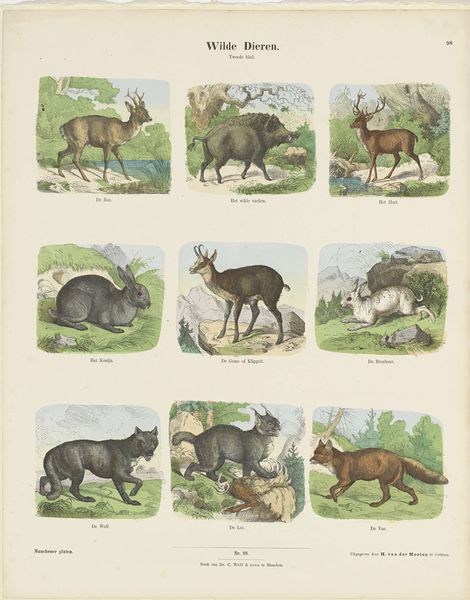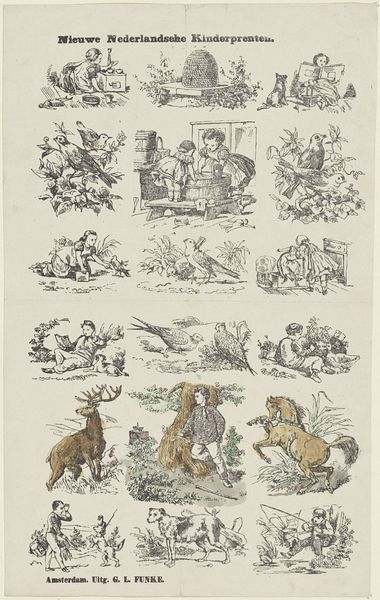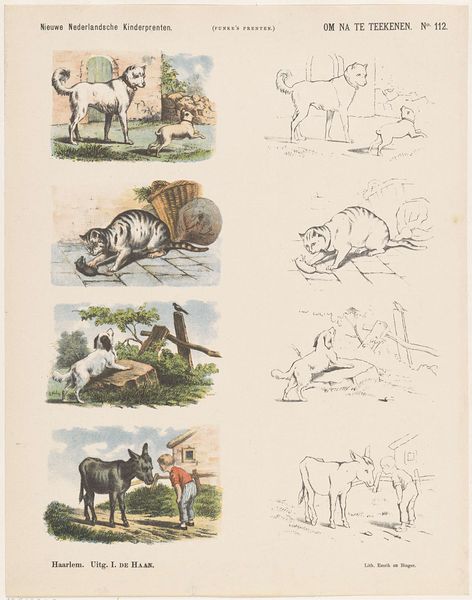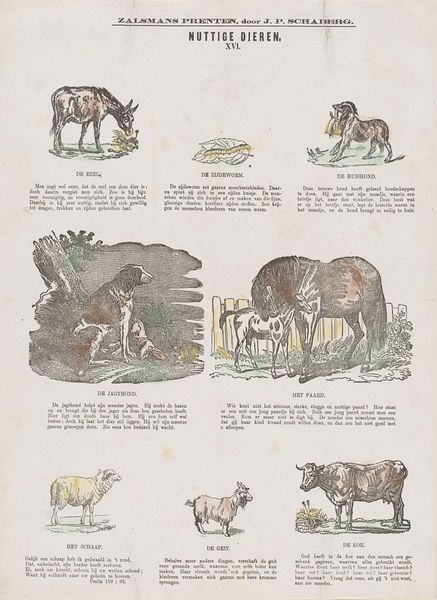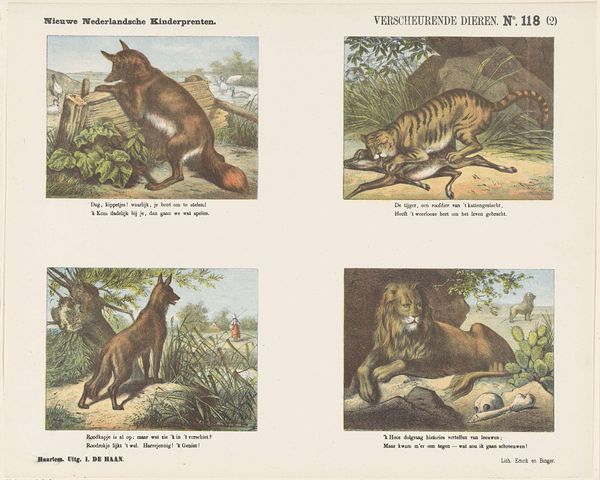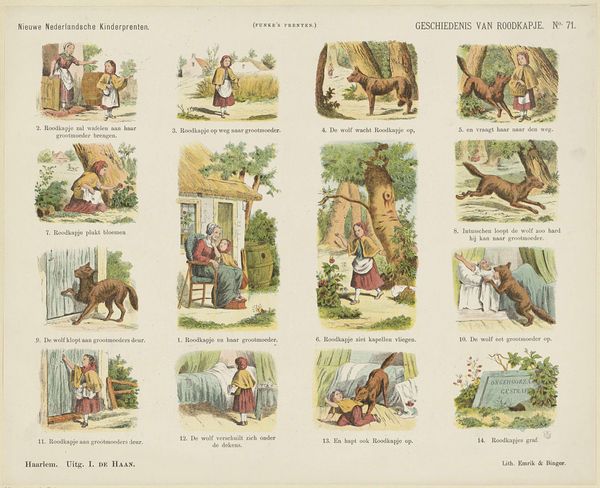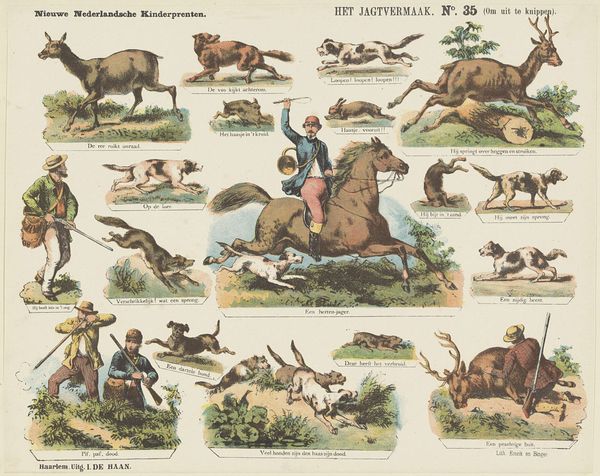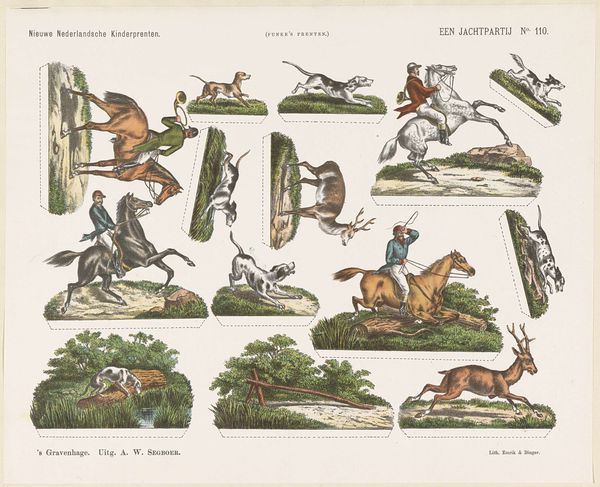
painting
#
aged paper
#
painting
#
traditional media
#
personal sketchbook
#
sketchwork
#
journal
#
folk-art
#
pen and pencil
#
sketchbook drawing
#
watercolour illustration
#
genre-painting
#
storyboard and sketchbook work
#
naturalism
#
sketchbook art
Dimensions: height 438 mm, width 349 mm
Copyright: Rijks Museum: Open Domain
Curator: What a delightful page! We are looking at "Oud en jong, / uit de dierenwereld", a work made sometime between 1903 and 1919 by Arie Willem Segboer. It presents a patchwork of animal families. My initial thought? Pure, unadulterated whimsy! It’s like stepping into a storybook. Editor: It’s interesting to see the compilation approach, clearly created as part of a mass printing and consumption strategy of images in the early 20th century. The divisions almost feel like segments in a production line, with the animal groupings repeated for effect. Curator: Exactly! There's that division of labor and a repetition of motifs suggestive of printmaking processes of that era! But on a personal level, it also feels… comforting. The soft watercolor palette lends a gentle quality, despite the many species vying for attention. It makes you think of the interconnectedness of all living things. It makes me feel nostalgic, really. Editor: Right, Segboer really does engage in an idealisation of pastoral labour. Notice the contrast between the domesticated animals and the wild, as if creating some subtle social commentary between country life versus city life, human manipulation over natural order. Curator: Yes! But consider the detail put into capturing each creature. You can almost feel the sheep’s wool or see the twinkle in the fox's eye! I admire his grasp of form. A childlike approach but a masterful control of watercolors for illustrative purposes. It feels timeless. I find that I start imaging the untold narratives, what lies behind Segboer’s decision to document the animal kingdom in these ways, its purpose within Dutch folk art of that time? What function do you see in such art production, editor? Editor: Perhaps for education? Instilling respect for rural settings, and for its labour, so important within children's lives back then? Its form caters toward children for its use, of course, but within production terms, these illustrations hold the intention of upholding traditional trades during progressive moments. And this is why these compilations maintain relevance for a modern viewer too. Curator: It’s true; beneath that childlike joy, these sketches show the hard work it entails to continue nature's wheel turning around; its continuous birth and aging cycles of our surroundings, the "Oud en Jong," title's purpose! Well, that makes me want to go hug my dog and reflect on time! Editor: Likewise; it invites consideration as much for animal nature, as the human social production involved to capture it too!
Comments
No comments
Be the first to comment and join the conversation on the ultimate creative platform.
